As Malaysia’s Gross Domestic Product (GDP) continues to expand, so does the nation’s demand for electricity to power its industries, businesses, and communities. This rising demand reflects a stronger, more developed economy.
For decades, coal and natural gas have provided the foundation of Malaysia’s energy mix, ensuring reliable and affordable supply. At the same time, the country has begun diversifying the energy mix with solar, creating space for cleaner and more innovative solutions. Today, while coal and natural gas remain significant contributors, solar energy is steadily gaining ground - a signal of momentum towards a more sustainable and diversified energy future.
Based on internal analysis, total installed capacity in Peninsular Malaysia is projected to grow from around 33 GW in 2025 to approximately 170 GW by 2050. This expansion is not just about scale, but about transformation where renewables will form the backbone of the system, supplying around 70% of capacity by mid-century.
Solar will lead this shift, supported by hydropower, interconnection, and emerging storage solutions. Natural gas will continue to play a role as a transition fuel, while coal is planned to be phased out entirely by 2045, positioning Malaysia on a low-carbon growth trajectory aligned with its net-zero ambitions.
Realising this transition is a mammoth task, one that Tenaga Nasional Berhad (TNB) has embraced with determination as it positions itself at the forefront of the nation’s energy industry. Guided by its Carbon Management Strategy, TNB has set ambitious milestones: a 5% annual reduction in carbon emission intensity starting in 2024, a 35% reduction by 2035, and ultimately net zero carbon emissions by 2050. These commitments reflect not only alignment with the NETR, but also TNB’s responsibility to drive sustainable growth in tandem with Malaysia’s rising energy needs.
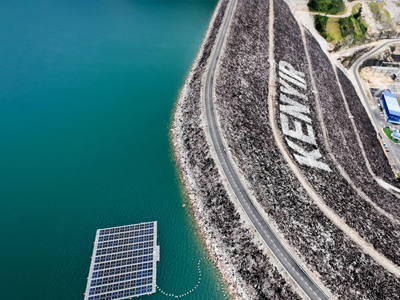
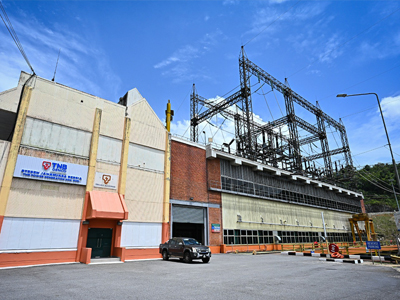

From Growth to Responsibility
Malaysia’s economic growth has historically moved in lockstep with electricity demand. As GDP expanded, industries, businesses, and households required more power, driving up national generation, and inevitably, emissions.
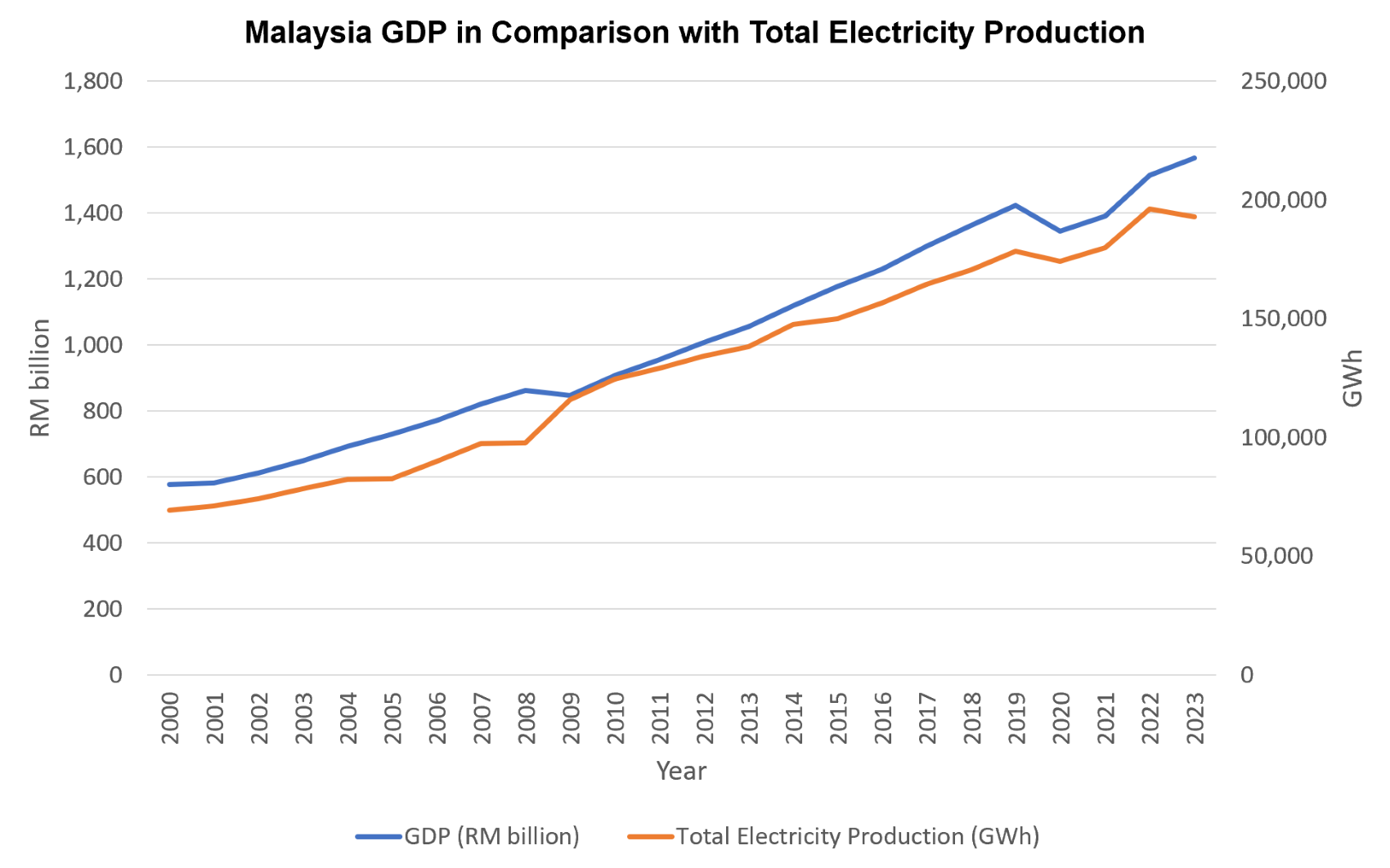
Chart 1: Malaysia GDP in comparison with Total Electricity Production
Source:
- GDP: Department of Statistics Malaysia (DOSM)
- Electricity Production: The International Energy Agency (IEA)
Chart 1 highlights that between 2000 and 2023, the nation’s GDP expanded at a compound annual rate of 4.43%, reflecting steady economic progress and development. Over the same period, total electricity generation rose slightly faster at 4.55% annually, driven by industrialization, urbanization, and the growing demand for reliable power.
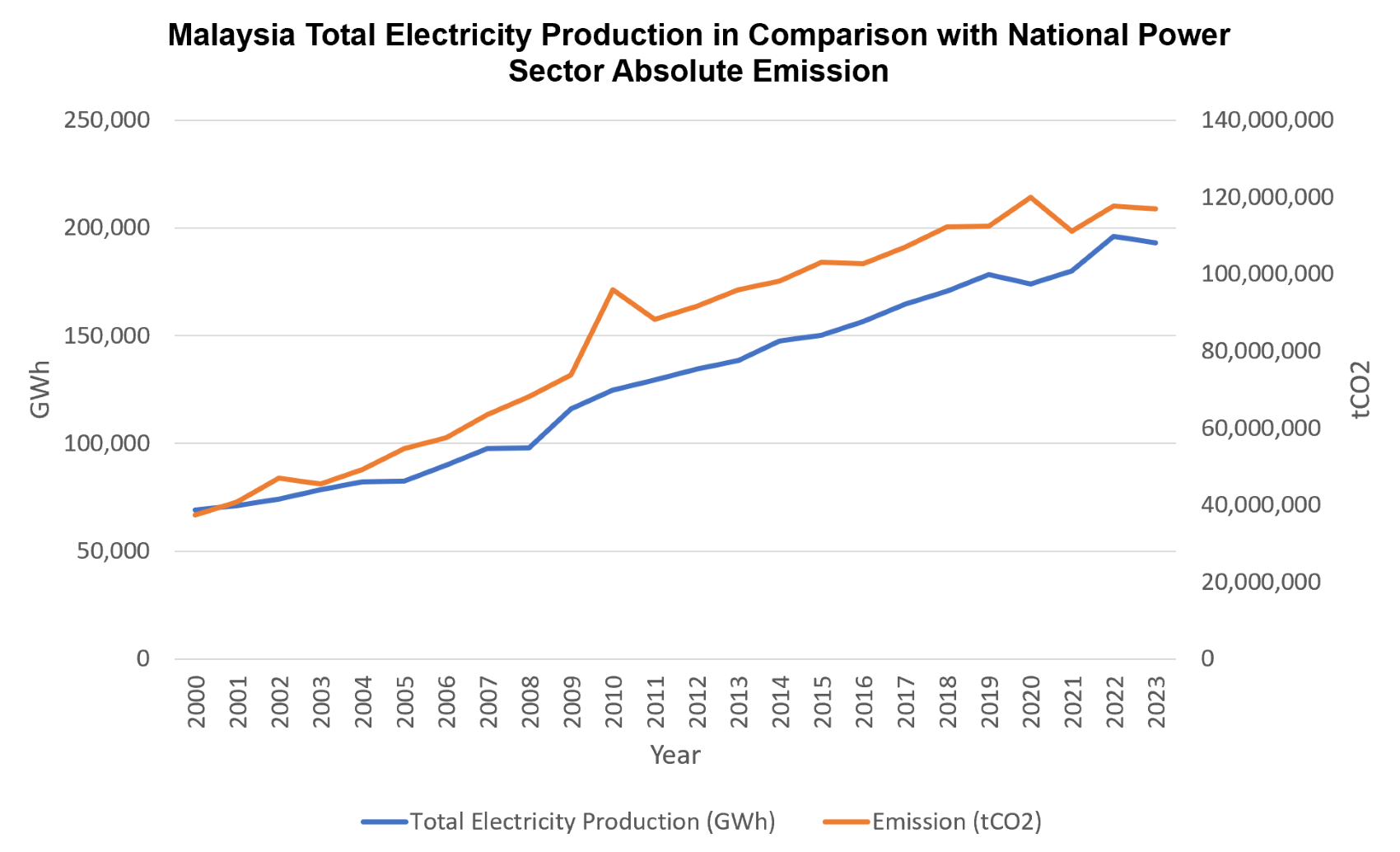
Chart 2: Malaysia Total Electricity Production in comparison with National Power Sector Absolute Emissions
Source:
- Electricity Production: The International Energy Agency (IEA)
- Absolute Emission 2000-2022: The International Energy Agency (IEA)
- Absolute Emissions 2023: Emissions Database for Global Atmospheric Research
Chart 2 illustrates the relationship between electricity generation and emissions over the same timeframe. While total electricity output increased to meet national demand, emissions from the power sector grew at a compound annual rate of 5.07%. While the progress in GDP has naturally resulted in higher electricity-sector emissions, it also highlights opportunities for transition toward cleaner and more efficient generation.
Today, a new force is reshaping this dynamic: data centres. Rapidly emerging as a cornerstone of Malaysia’s digital economy, they power cloud services, e-commerce, fintech, and advanced technologies such as AI. Their growth is closely tied to GDP expansion, as digital infrastructure underpins productivity, innovation, and competitiveness.
As of the first half of FY2025, a total of 24 data centre projects have been completed, delivering a combined capacity of 3.5 GW. In addition, five projects with a total capacity of 480 MW have signed Electricity Supply Agreements (ESA), ensuring long-term energy security for their operations. Overall, as of August 2025, 47 projects have been secured across Peninsular Malaysia, representing a total planned capacity of 6.7 GW - reflecting the nation’s strong momentum in becoming regional hub for enterprise data centres.
Yet this opportunity comes with significant energy implications. Data centres are electricity-intensive, and without intervention, their reliance on fossil-fuel-based grids could substantially increase Malaysia’s carbon emissions. Current projections suggest demand from the sector could reach nearly 13 GW by 2030 and surpass 20 GW by 20401.
Meeting this surge will require large-scale capacity additions, including gas-fired plants, while simultaneously accelerating renewable energy deployment to reduce carbon intensity. This is also driving greater emphasis on efficiency standards such as power usage effectiveness and the adoption of sustainable cooling technologies. By embedding sustainability into the data centre rise, Malaysia and TNB aim to ensure that digital growth strengthens economic competitiveness without undermining national climate ambitions.
Moving Towards Net Zero
The energy landscape in Peninsular Malaysia continues to evolve as the power sector balances cost, reliability, and sustainability. Understanding the mix of energy sources and their impacts provides better insight into the nation’s evolving power landscape.
_in_1HFY2025_V1.png)
Chart 3: Fuel Costs & Units Generated (TNB & IPPs–Peninsular) in 1HFY2025
Chart 3 above shows that coal remains the main fuel source for TNB and Independent Power Producers (IPPs) in Peninsular Malaysia, accounting for slightly more than half of total fuel costs and the largest share of generation. Gas continues to play a steady supporting role in both cost and generation, while distillate and oil remain minimal at below 1%. Renewables are slowly increasing their share, with hydro maintaining a stable contribution and solar showing gradual growth. However, changes in the generation mix are largely shaped by external factors including merit order (least-cost basis), fuel availability, and other operational considerations.
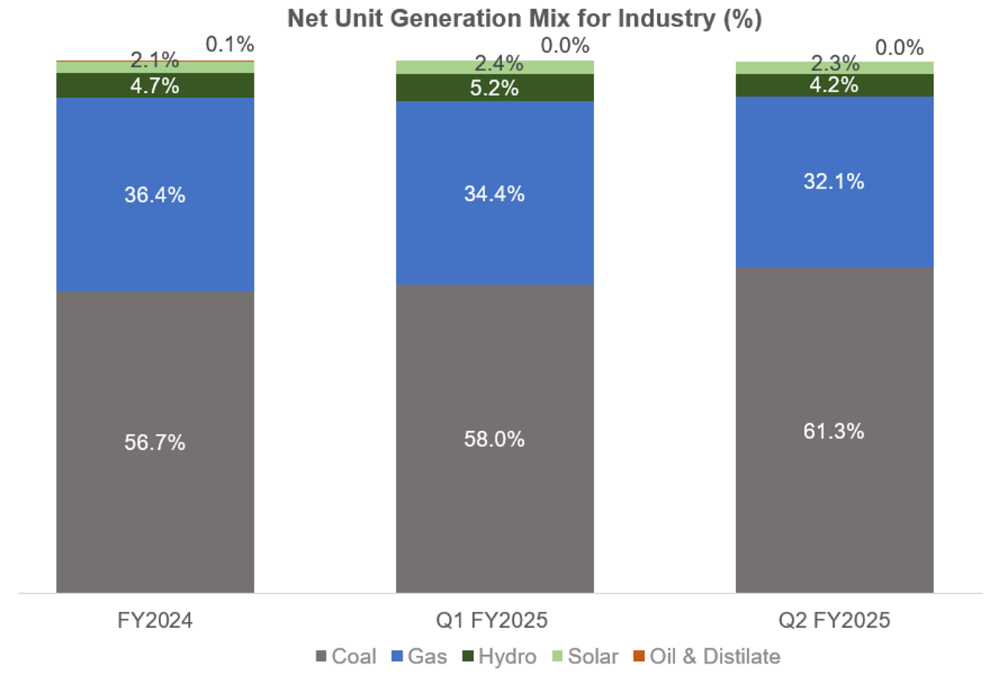
Chart 4: Net unit generation mix for industry - Peninsular (%)
Chart 4 above shows that Peninsular Malaysia’s net unit generation mix for industry, reflecting both the realities of ensuring reliable supply and the steady integration of cleaner energy sources. Gas remains an important contributor at 32.1% in second quarter of the financial year 2025, while hydro and solar continue to gain ground, reaching 5.2% and 2.4% respectively in first quarter of the financial year 2025. The near absence of oil and distillate demonstrates the shift from high-emission fuels, signalling progress toward a lower-carbon future.
Despite the steady increase in renewable energy in Peninsular Malaysia, coal generation has also risen to meet the country’s growing electricity demand. This reflects the need to balance sustainability with reliability as consumption expands, particularly with new drivers such as the digital economy and data centre growth.

Figure 1: Coal plants emit approximately 1.8 times higher than gas plants
Coal-fired power plants emit approximately 1.8 times more CO₂e per megawatt-hour (MWh) than gas-fired counterparts, highlighting a significant opportunity for decarbonisation. Coal generation, though crucial for energy security, tends to produce more emissions than cleaner alternatives. By leveraging gas, TNB is able to maintain reliability while achieving lower carbon intensity compared to coal, creating space for renewables to grow at pace. This balanced approach enables Malaysia’s digital economy to thrive while advancing national climate commitments.
Building Resilience Through Innovation
To strengthen long-term resilience and support TNB’s Net Zero and Energy Transition agenda, TNB is accelerating the development of renewable energy.
Upcoming solar projects including TNB Bukit Sidim Kulim Solar (TBSKS), Selarong Pertama Energy Sdn Bhd (SPE), and Setia Kawan Energy Sdn Bhd (SKE), will collectively deliver 154 MWp of solar capacity targeted by the end of 2025.
TNB has also successfully won the bid for a development of 686 MWac solar plant under Large Scale Solar 5 (LSS5) which will be the largest solar plant in Malaysia once completed targeted in 2027.
TNB is also advancing decarbonisation through Carbon Capture and Utilisation (CCU) technologies, targeting a 30% reduction in emissions intensity by 2050. As an initial step, TNB has launched two pilot projects exploring CCU technology: Project Dragon at Jimah East Power in 2024 and Project Chlorobloom at TNB Janamanjung in 2025.
Project Dragon focuses on capturing CO₂ for applications such as e-fuels, microalgae cultivation, and high-value agriculture while Project Chlorobloom utilises CO₂ from flue gas to grow algae which can be applied in aquaculture, animal feed, and bio-fertiliser production. Chlorobloom’s phased approach also fosters community engagement, creating a self-sustaining CCU ecosystem rooted in circular economy principles.
Both projects are progressing on schedule, with completion expected by Q4 2026. Together, they are projected to reduce carbon emissions by approximately 5 tCO₂ per year for Project Dragon and 5.94 tCO₂ per year for Project Chlorobloom, which demonstrating a clear commitment for continuous improvement and long-term sustainability objectives.
Together, these initiatives showcase TNB’s commitment to innovation-driven decarbonisation, where technology, sustainable practices, and inclusive community involvement deliver economic, social, and environmental value. By transforming emissions into tangible resources, TNB is reducing its carbon footprint while demonstrating scalable solutions aligned with Malaysia’s climate ambitions and global sustainability goals.
The journey toward a greener energy mix is rarely straightforward. It requires more than simply reducing coal reliance - it demands reinventing Malaysia’s energy model to be resilient, low-carbon, and future-ready. For TNB, this is both a technical challenge and a responsibility: to provide affordable, reliable electricity while guiding the nation toward its long-term climate objectives.
Source:
1. Data centres could need more power by 2040 than Malaysia uses annually now, Malay Mail, 27 February 2025